Types of Nuclear Reactors: Exploring Nuclear Power Plants
2 minute readDiscover the different types of nuclear power plants and how they work
Home > Learning Center > Energy Production > Global Electricity Mix: How Energy is Generated Around the World
9 minute read • Javier Hinojosa • Last update February 2024

Most of us don’t think about energy or where it comes from unless there’s a power shortage or if we receive an unexpectedly large utility bill. Even though energy may not often come to mind, there’s quite a lot to consider. For example, you might be surprised to learn just how many different forms of energy power our homes and our cities.
In this article, we’ll take a closer look at different types of energy, how it’s measured, and how it’s used in our daily lives.
Primary energy sources are natural resources that can be directly used to produce energy, like fossil fuels (such as coal, oil, and natural gas), nuclear energy, and renewable energy sources (such as solar, wind, and hydroelectric power). They exist in nature and can be harnessed to generate energy.
Secondary energy sources are derived from primary energy sources. These secondary sources include electricity, gasoline, and other types of fuels that are produced through various processes. For instance, coal is burned to generate electricity, oil undergoes refining to produce gasoline, and wind turbines convert wind energy into electricity.
Non-renewable energy sources are those that can’t be replenished within a human lifetime. These sources have taken millions of years to form and are limited in quantity.
The main types of non-renewable energy sources are fossil fuels, which include crude oil, natural gas, and coal.
Crude oil, also known as petroleum, is a liquid fossil fuel formed from the remains of marine plants and animals. It’s extracted from underground reservoirs through drilling and can be refined into various products like gasoline, diesel, jet fuel, and lubricants. Crude oil is crucial for transportation, manufacturing, and electricity generation.
Natural gas is a gas fossil fuel primarily composed of methane (CH4) and other hydrocarbon compounds. It’s often found alongside oil deposits or in separate natural gas fields. Natural gas is widely used for heating, cooking, electricity generation, and as a vehicle fuel. It’s considered a cleaner-burning fossil fuel compared to coal and oil, as it produces fewer greenhouse gas emissions. According to the US Energy Information Administration, approximately 117 pounds of CO2 are emitted Per million British thermal units (MMBtu) equivalent of natural gas, whereas coal contributes over 200 pounds of CO2 per MMBtu, and distillate fuel oil accounts for more than 160 pounds of CO2 per MMBtu.
Coal is a solid fossil fuel formed from the remains of plant matter that lived millions of years ago. It’s extracted from underground mines or through open-pit mining. Coal is primarily burned in power plants to generate electricity, but it’s also used in industrial processes and for heating purposes. The burning of coal releases significant amounts of carbon dioxide (CO2) and other pollutants, contributing to air pollution and climate change.
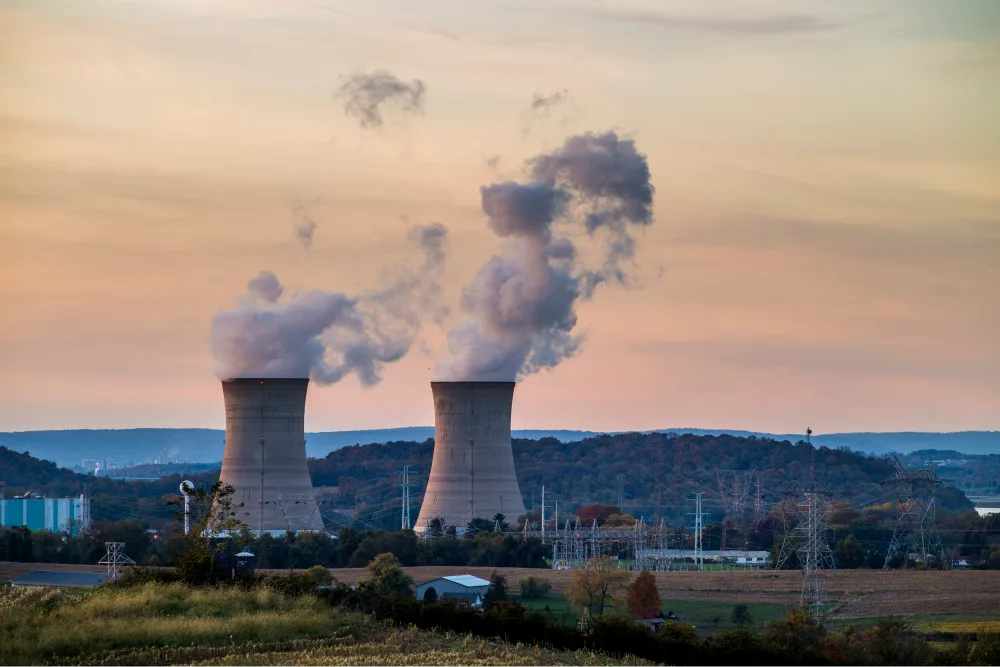
Nuclear energy is obtained from nuclear reactions, specifically the splitting (fission) or combining (fusion) of atomic nuclei. It’s a highly concentrated and powerful source of energy. Although nuclear energy is not a fossil fuel, it’s classified as nonrenewable because the fuel used in current nuclear reactors, such as uranium, is finite.
Nuclear fission is the process where the nucleus of an atom is split into smaller parts, releasing a substantial amount of energy. This process is utilized in nuclear power plants to generate electricity. Fission reactions are sustained through a controlled chain reaction, where the energy released from one reaction triggers subsequent reactions.
Nuclear fusion, on the other hand, is the process where atomic nuclei combine to form a heavier nucleus, resulting in the release of significant energy. Fusion reactions have the potential to provide a virtually limitless supply of clean energy, similar to how the sun produces energy. Achieving controlled and sustained fusion for practical energy production on Earth is still an ongoing area of research and development.
Scientists at the National Ignition Facility in California achieved a significant breakthrough in nuclear fusion in December 2022, marking a major step toward a sustainable and clean energy source. The experiment resulted in a net energy gain, bringing researchers closer to unlocking an infinite source of energy without relying on fossil fuels. Nuclear fusion, the process of merging atoms to release energy, has long been pursued as a means to replicate the fusion reactions that power the sun. While the current achievement is on a smaller scale, it sets the stage for further research and development to scale up fusion projects and reduce costs. Commercial viability and widespread electricity generation remain future goals, requiring additional advancements. Nonetheless, the breakthrough represents an exciting milestone in the quest for fusion energy.
Renewable energy sources are those that can be naturally replenished within a human lifetime and have a minimal environmental impact, including:
Solar energy harnesses the power of the sun to generate electricity or heat. There are two primary technologies used to capture solar energy:
Photovoltaic systems, commonly known as solar panels, convert sunlight directly into electricity using semiconductor materials. When sunlight hits the solar cells, it excites electrons, generating a flow of electricity.
Concentrated Solar Power systems use mirrors or lenses to concentrate sunlight onto a receiver. The heat collected is then used to produce steam, which drives a turbine to generate electricity.
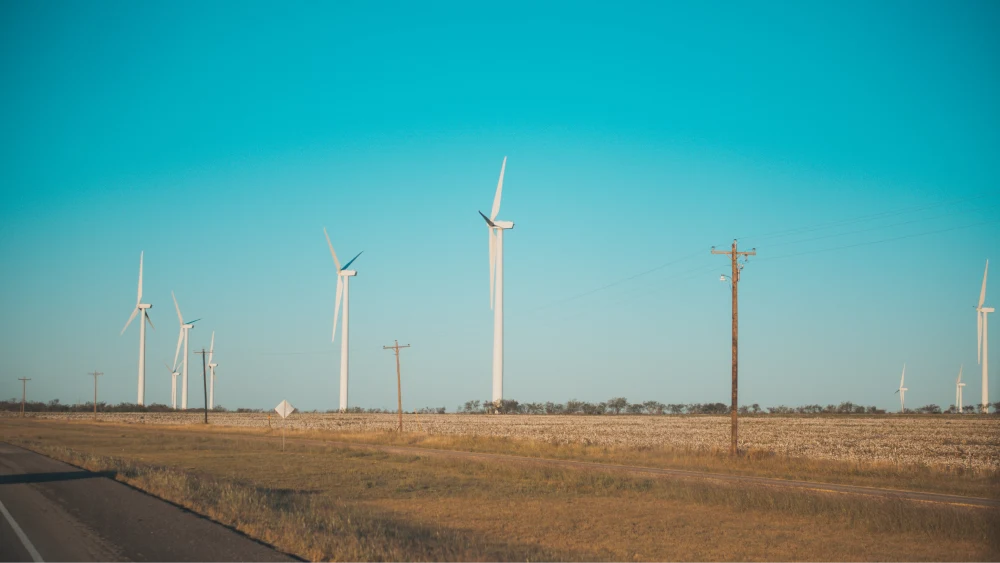
Wind energy converts the kinetic energy of wind into electricity through the use of wind turbines. There are two main types of wind turbines:
Onshore wind turbines are installed on land and harness the power of the wind to generate electricity. As the wind blows, it rotates the turbine blades, which then turn a generator to produce electricity.
Offshore wind turbines are situated in bodies of water, typically in coastal areas or offshore locations. These turbines take advantage of stronger and more consistent wind speeds found at sea.
Hydropower harnesses the energy of moving water, typically in rivers or dams, to generate electricity. There are various methods of utilizing hydropower, including:
Hydroelectric dams store water in a reservoir, which is then released through turbines. The flowing water drives the turbines, producing electricity.
Tidal power utilizes the gravitational forces of the moon and sun to generate electricity. Tidal turbines are placed underwater, and as tides rise and fall, the movement of water spins the turbines.
Wave power captures the energy from ocean waves and converts it into electricity. Devices, such as oscillating water columns or floating buoys, capture the motion of waves and convert it into mechanical energy that drives generators.
Biomass energy utilizes organic materials, such as wood, crop residues, or organic waste, to generate heat or electricity. Biomass can be converted into different forms of energy:
Biofuels are derived from biomass and can be used as a renewable alternative to conventional fossil fuels in transportation. Ethanol and biodiesel are examples of biofuels.
Biogas is produced through the decomposition of organic waste in the absence of oxygen. It’s primarily composed of methane and can be used as a fuel for heating or electricity generation.
Biomass gasification involves converting biomass into a synthesis gas (syngas) by heating it in a controlled environment. The syngas can be further used to generate electricity or produce biofuels.
Geothermal energy utilizes the heat from within the Earth to generate electricity or provide heating and cooling. It relies on the natural heat stored in the Earth’s crust. There are different methods of utilizing geothermal energy:
Ground source heat pumps use the relatively stable temperature of the ground to provide heating and cooling for residential and commercial buildings.
Enhanced Geothermal Systems (EGS) involve drilling deep into the Earth’s crust and injecting water to create a reservoir of steam or hot water. The steam is then used to generate electricity.
As the world seeks to transition to more sustainable energy systems, several emerging technologies show great promise. These technologies aim to address the challenges of energy production, storage, and efficiency. Here are a few examples:
Hydrogen fuel cells produce electricity by combining hydrogen and oxygen, with water as the only byproduct. Fuel cell-powered vehicles and stationary applications offer a clean alternative to traditional combustion engines, with zero greenhouse gas emissions and improved efficiency.
OTEC utilizes the temperature difference between warm surface waters and cold deep ocean waters to generate electricity. By harnessing the thermal energy of the ocean, this technology has the potential to provide sustainable power and support coastal regions with a consistent energy source.
Piezoelectric materials generate electricity when subjected to mechanical stress or vibrations. This technology can be integrated into various systems to capture and convert mechanical energy from sources such as footsteps, vibrations, or even traffic into electrical energy.
Advancements in energy storage technologies are crucial for integrating intermittent renewable energy sources into the grid. Battery technologies, such as lithium-ion batteries, are becoming more efficient and cost-effective, enabling the storage of excess energy for later use. Other emerging storage technologies include flow batteries, compressed air energy storage, and thermal energy storage.
Energy efficiency and conservation play vital roles in reducing energy consumption and minimizing environmental impacts. Some trends that are currently emerging include:
Smart grid technologies utilize advanced communication and control systems to optimize the generation, distribution, and consumption of electricity. By enabling real-time monitoring, demand response, and efficient grid management, smart grids enhance energy efficiency and reliability.
Building design and construction techniques are evolving to prioritize energy efficiency. High-performance buildings incorporate insulation, efficient lighting, smart HVAC systems, and renewable energy generation to reduce energy consumption and environmental impact.
The transportation sector is embracing electric vehicles (EVs) and developing charging infrastructure. Electrification of transportation, coupled with improved efficiency standards, promotes energy conservation and reduces emissions.
Energy usage has significant environmental and social implications. Understanding these impacts is crucial for developing sustainable energy systems:
The burning of fossil fuels releases greenhouse gasses (GHGs), contributing to climate change. Transitioning to cleaner energy sources with lower GHG emissions, such as renewables, is crucial for mitigating climate change and reducing carbon footprints.
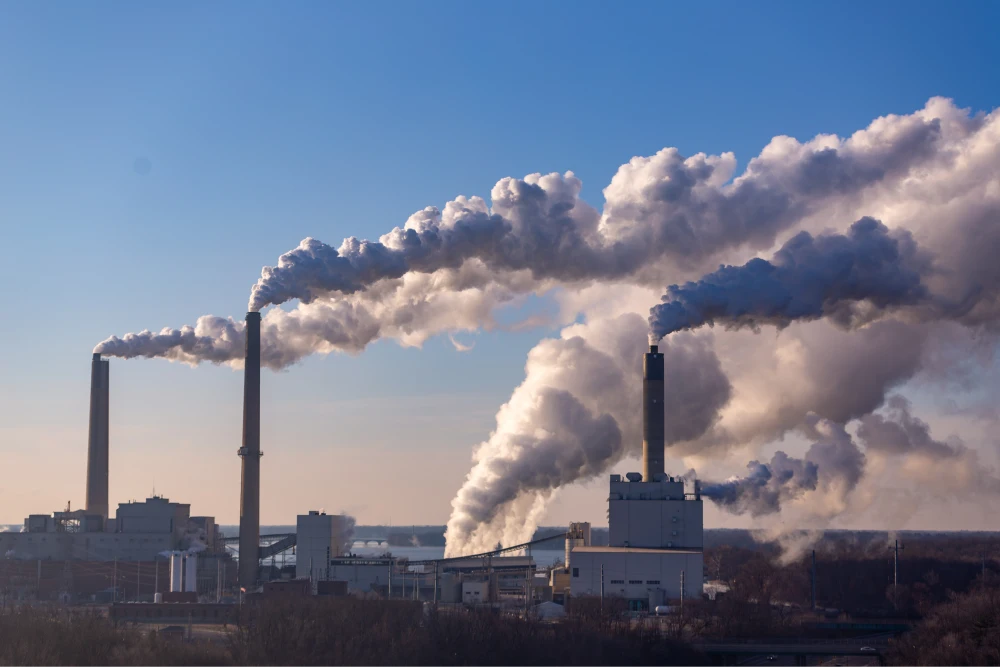
Burning fossil fuels and certain types of energy production can lead to air pollution and water contamination, adversely affecting human health and ecosystems. Transitioning to cleaner energy sources and adopting stringent emission controls are important for reducing these impacts.
Large-scale energy projects, such as dams or solar farms, can disrupt land ecosystems, fragment habitats, and impact wildlife. Balancing renewable energy development with conservation measures is necessary to minimize these disruptions.
Unequal access to affordable and reliable energy services is a social issue. Achieving energy access for all while ensuring affordability and equity is important for fostering sustainable development and addressing social disparities.
Transitioning to a sustainable energy future requires concerted efforts and holistic approaches. Over 80% of the world’s energy still comes from fossil fuels, although that is changing.
In 2019, Iceland stood out as the country with the highest share of energy from low-carbon sources, at 79%. The majority of this energy came from hydropower (55%) and geothermal energy (24%).
Other countries also achieved significant shares of low-carbon energy, including Sweden (69%), Norway (66%), France (49%), and Switzerland (49%), which relied on nuclear power and renewables. Costa Rica has been able to produce 100% of its electricity from renewable sources.
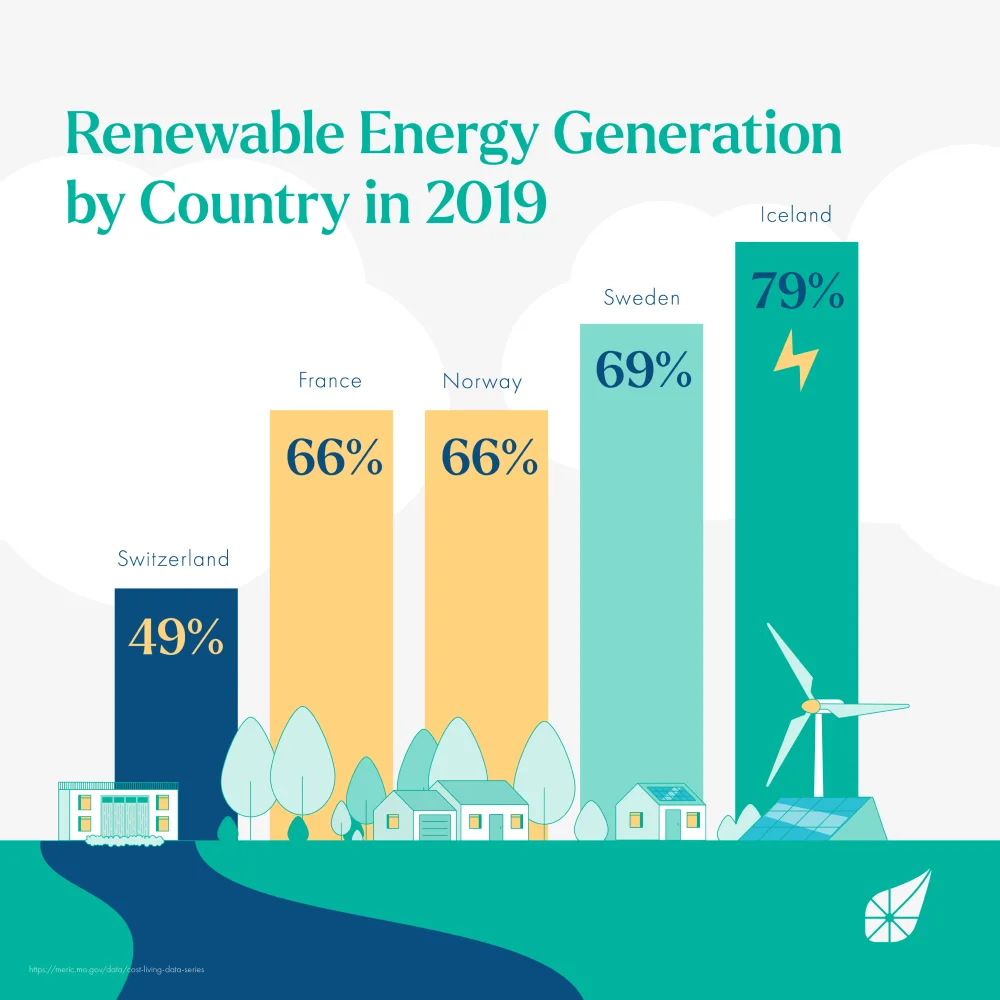
Finland and Brazil had a relatively high share of more than 40% from low-carbon sources. On the other hand, some countries heavily relied on fossil fuels, with oil-producing nations like Saudi Arabia, Oman, and Kuwait obtaining less than 1% of their energy from low-carbon sources.
Among the largest emerging economies, South Africa had a low share of 5% from low-carbon sources, while India and China achieved slightly higher shares of 9% and 15%, respectively.
While there is still a long way to go, many countries are moving in the right direction and providing hope for a sustainable energy future. Some key strategies include:
Diversifying the energy mix by increasing the share of renewables and reducing reliance on fossil fuels is essential. Governments can play a crucial role by implementing supportive policies and introducing tax breaks for businesses and homeowners that use renewable energy.
The transition to a low-carbon economy involves reducing greenhouse gas emissions and promoting cleaner energy sources. This includes scaling up renewable energy deployment, implementing energy efficiency measures, encouraging decentralized energy systems, and promoting the electrification of transportation. Sustainable land use practices, such as reforestation and conservation, are also important.
Continued innovations in energy technology are crucial for achieving a sustainable energy future, including advanced energy storage to enhance renewable energy integration, grid modernization to optimize energy distribution, carbon capture, and storage to reduce emissions, and advancements in green hydrogen production for various sectors.
Transitioning to more sustainable energy sources is crucial for individuals and businesses to reduce their environmental impact and contribute to a more sustainable future.
Individuals and businesses can invest in energy-efficient appliances, lighting, and equipment, as well as implement energy-saving practices such as proper insulation and smart energy management systems.
Individuals can install solar panels on rooftops or participate in community solar programs. Businesses can explore options for purchasing different types of energy directly from providers, such as natural gas or natural gas mixed with renewables.
While natural gas is a fossil fuel, it is considered a cleaner-burning alternative compared to coal and oil. Transitioning from coal-fired power plants to natural gas power plants can significantly reduce greenhouse gas emissions.
The world consumed 25,300 terawatt-hours in 2021. While many different types of energy are being consumed around the world, the majority of this energy, about 84.3%, was produced from fossil fuels, including oil (33.1%), coal (27%), and gas (24.3%). 15.7% of global energy came from low-carbon sources, including nuclear power (4.3%), hydropower (6.4%), and solar (1.1%).
The burning of fossil fuels, such as coal, oil, and natural gas, is the main source of greenhouse gas emissions that contribute to climate change. Greenhouse gasses trap heat in the atmosphere, which causes the Earth’s temperature to rise. This can lead to a variety of environmental problems, such as more extreme weather events, rising sea levels, and melting glaciers.
The burning of fossil fuels also contributes to air pollution. Air pollution can cause a variety of health problems, such as respiratory problems, heart disease, and cancer.
Renewable energy sources, such as solar, wind, and hydroelectric power, do not produce greenhouse gasses or air pollution. As a result, they are a more sustainable option for generating energy.
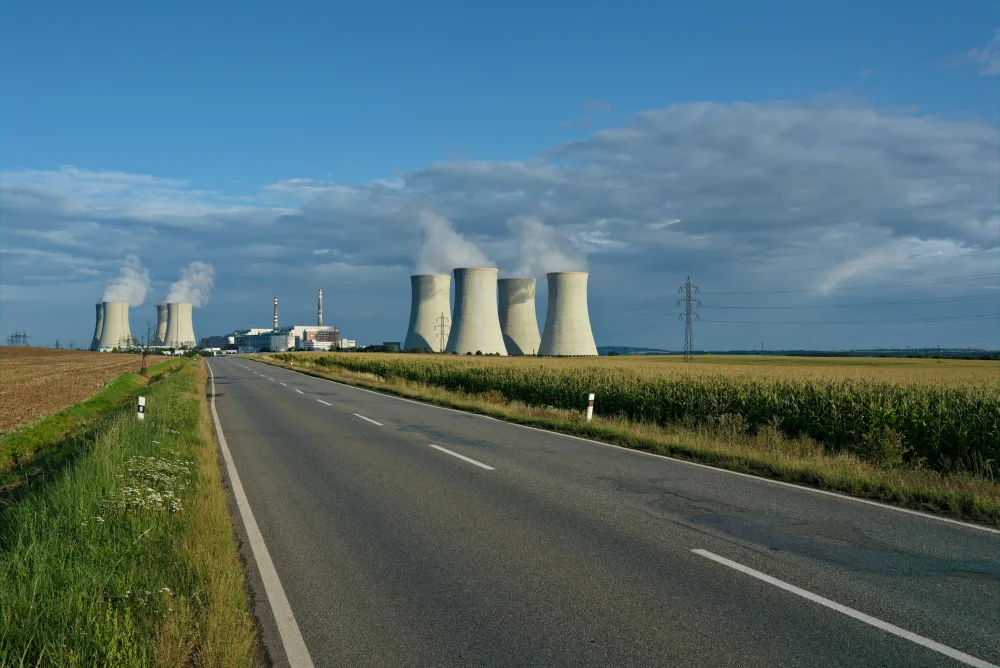
Discover the different types of nuclear power plants and how they work

Electricity has a fascinating and complex history that stretches back far beyond the modern era. From the ancient Greeks who discovered static electricity to the scientific revolutions of the 18th and 19th centuries that unveiled its true potential, the journey of electricity is a tale of curiosity, experimentation, and groundbreaking…
Texans can save up to
$500 per year
by switching to BKV Energy.
Explore affordable electricity plans.